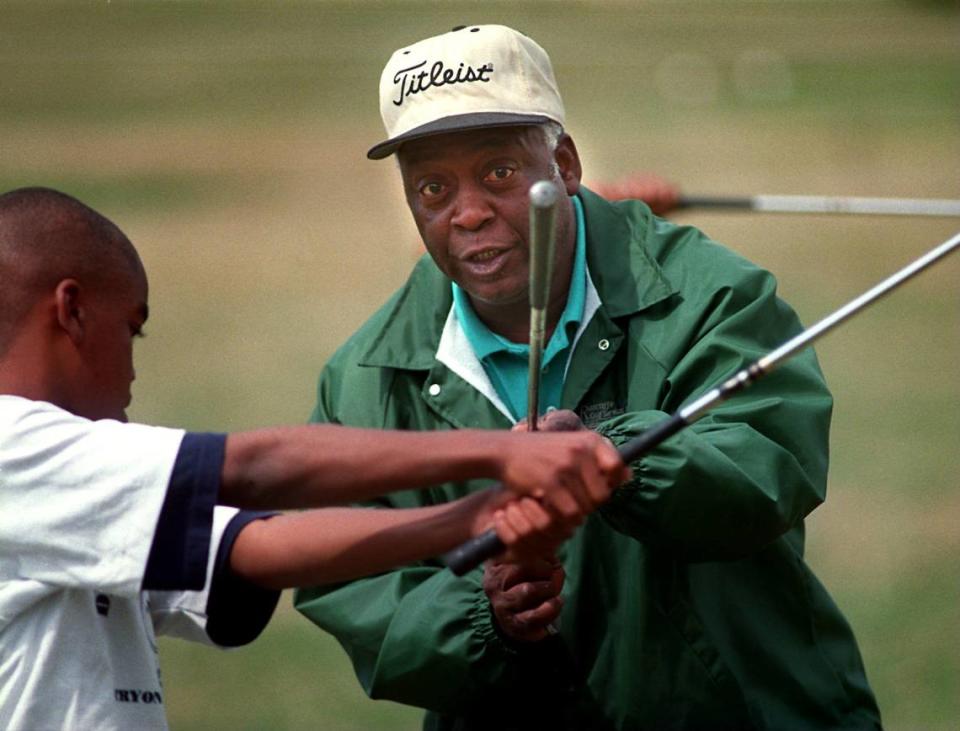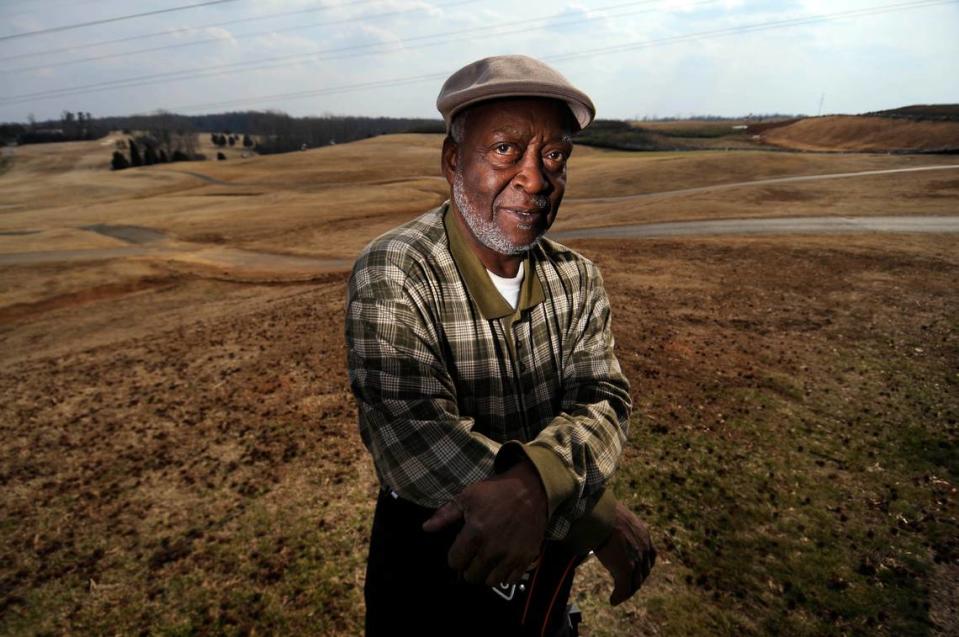Black Charlotte golf legend, dead at 81, leaves behind a legacy that helped birth a Tiger
- Oops!Something went wrong.Please try again later.
- Oops!Something went wrong.Please try again later.
- Oops!Something went wrong.Please try again later.
- Oops!Something went wrong.Please try again later.
- Oops!Something went wrong.Please try again later.
James Black, who grew up on the southwest side of Charlotte next to a golf course in the 1950s, taught himself how to play while caddying for white men, and went on to break Tiger Woods-level barriers for Black professional golfers long before Tiger Woods, died last Thursday in a local hospital following a lengthy illness. He was 81.
His youngest son Norman Black of Tampa, Florida, confirmed his passing this week, saying his father had suffered a series of minor strokes over the past year.
As a boy in the 1950s, James Black grew up shagging practice balls at the old Eastwood Golf Course (formerly at Eastway Drive and The Plaza), where professional golfers like Sam Snead and Jimmy Demaret were known to play. Another pro, Clayton Heafner, would let Black hit balls when he could. But finding opportunities to play golf himself weren’t easy at the time, since African Americans weren’t officially allowed to do so in those years.
“We used to play the back nine,” Black told The Associated Press in 1994. “The greens superintendent used to shoot at us to keep us off the course.” He didn’t specify whether that was at the course he lived by, Eastwood, or another course. But it could have been all of the above.
Though he found ways to sneak in rounds for years in his youth, Charlotte didn’t have a course Black — or Black golfers in general — was actually officially welcome to use until he was 15 years old.
That didn’t happen until after Charlotte’s first public golf course (built in the late 1930s and originally known as Bonnie Brae Golf Course before it became Revolution Park Golf Course) was integrated in a landmark Civil Rights case in December 1956, paving the way for Black Charlotteans to officially be permitted to play the course in 1957.
By then, his skills were already pretty advanced, with Black having spent all those years learning from Heafner, Snead, Demaret and others the art of shaping golf shots. He played his first tournament the same year in Washington, D.C.
Black would go on to spend several years playing — and routinely winning — on the United Golfers Association tour. The UGA was often referred to as “the chitlin’ circuit” because unlike the PGA Tour, it was open to Black golfers, and so that’s where the competitive ones flocked to.
The PGA had a Caucasian-only clause in its bylaws until 1960.

After the PGA got rid of that rule, fellow Charlottean Charlie Sifford would become the first Black golfer on the PGA Tour. But Black arrived in 1964, at the age of just 21, and made an equally big mark in his very first PGA event: During the first round of the Los Angeles Open, Black shot a 5-under-par 67 that put him in a tie for the lead, making him the first African American to ever top a PGA leaderboard at the end of a full round.
The next Black golfer to do it would be Tiger Woods in 1998. (In The Golf Channel’s 2009 documentary “Uneven Fairways,” Black is one of the men Woods is referring to when he says: “I owe my entire career to them.”)
He would only go on to start 11 PGA events, and recalled to The Charlotte Observer in 2009 that he heard the hate and felt the eyes on him. Racism and, relatedly, difficulty obtaining sponsors prevented his run in the PGA from lasting very long.
Still, “bitterness is something I’ve never had,” Black said in an interview at the time. “I knew my dos and don’ts. I was out there to do a job, not fight a Civil (Rights) battle. ... I happened to be involved in it while I was doing my work. But it’s hard to be bitter about doing something you love.”
“He could’ve been one of the greatest players in the world,” Charlie Owens, another pioneering Black golfer of that era, told the Tampa Tribune in 2011 for a profile on Black.
Black later spent 14 years working at MacDill Air Force Base in Tampa, Florida, and also opened a driving range nearby. He would return to his hometown of Charlotte in the early 2000s and continued working to promote golf among Black youth.
In the ’90s, he worked to introduce inner-city kids to the sport when he wasn’t doing his day job as director of promotions at Sunset Hills Golf Course in northwest Charlotte. In the 2000s, he became one of nine African American players to have a hole dedicated in their honor at Revolution Park Golf Course, the course that he was prohibited from playing for much of his childhood (and the course that, in 2011, was renamed for his friend and mentor Charlie Sifford).
Black also was included as an honoree, along with Sifford, when Mecklenburg County Park and Recreation dedicated its Golf Wall of Fame at the Dr. Charles L. Sifford Golf Course at Revolution Park in 2014.
His love for the game and his support of Black people playing it continued into the latest chapter of his life.
Just last August, during the Charlie Sifford Centennial Cup — which was part of a year-long celebration of what would have been Sifford’s 100th birthday and featured six Historically Black Colleges and Universities programs — organizers invited Black to address HBCU players about their opportunity to play in the event at Charlotte’s prestigious Quail Hollow Club and to celebrate Sifford.
As he spoke to them, Black wept.
Golf also has become a family legacy: His youngest son, 26-year-old Norman, is trying to launch a career as a player on the PGA Tour.
“Me even having the opportunity ... is because of the contributions that he’s made,” Norman Black said, calling from Moline, Illinois, where on Thursday afternoon he was getting ready for the John Deere Classic qualifier. If he qualifies, it would be the first PGA start of his young career.
James Black is also survived by four other children — James Coonce, George Black, Shirley Black and Stephanie Black — along with several grandchildren.


